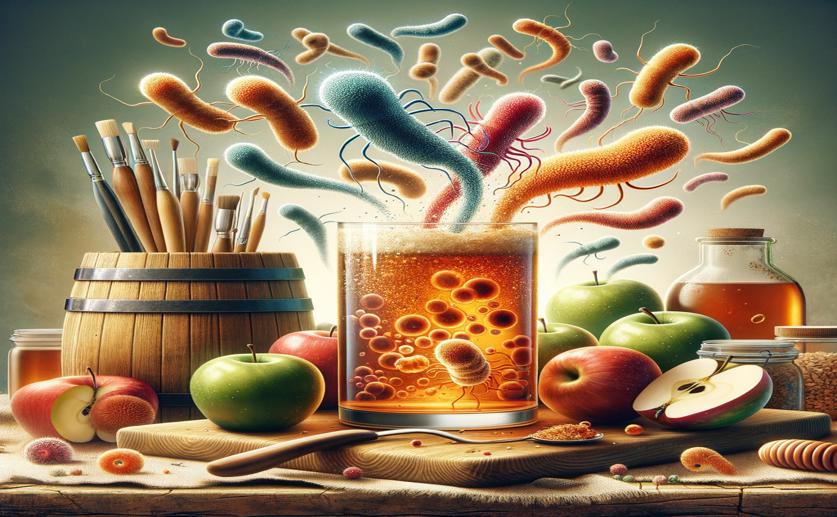
Friendly Bacteria Improve Fermentation, Antioxidants, and Aroma in Apple Cider
Jenn Hoskins
18th July, 2024

Image Source: Natural Science News, 2024
Key Findings
- The study by Sichuan University of Science and Engineering explored how different strains of Lactiplantibacillus plantarum affect cider quality during fermentation
- Different L. plantarum strains significantly influenced the antioxidant activity and aroma compounds in ciders
- Mixed fermentations with L. plantarum and Saccharomyces cerevisiae resulted in higher antioxidant activity and improved aroma profiles compared to pure S. cerevisiae fermentations
References
Main Study
1) Lactiplantibacillus plantarum exerts strain-specific effects on malolactic fermentation, antioxidant activity, and aroma profile of apple cider.
Published 30th October, 2024 (future Journal edition)
https://doi.org/10.1016/j.fochx.2024.101575
Related Studies
2) Impact of changes in wine composition produced by non-Saccharomyces on malolactic fermentation.
3) Wine aroma profile modification by Oenococcus oeni strains from Rioja Alavesa region: selection of potential malolactic starters.
4) Effects of pretreatment methods and leaching methods on jujube wine quality detected by electronic senses and HS-SPME-GC-MS.
5) Phenolic compound profiles in Finnish apple (Malus × domestica Borkh.) juices and ciders fermented with Saccharomyces cerevisiae and Schizosaccharomyces pombe strains.



 17th April, 2024 | Jenn Hoskins
17th April, 2024 | Jenn Hoskins